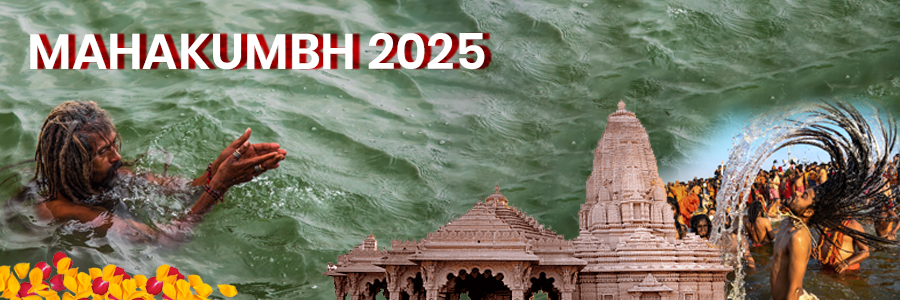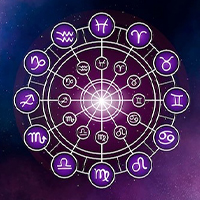The Cosmic Dance: Maha Kumbh Mela 2025
Hindu mythology serves as the foundation for the Maha Kumbh Mela, also known as the festival of the sacred pitcher. It is the largest public gathering and gesture of faith in the world. Ascetics, saints, sadhus, sadhvis, Kalpvasis, and pilgrims from all walks of life come together to celebrate this religious event. Hindus celebrate the Kumbh Mela four times during twelve years as a sacred pilgrimage. The Kumbh Mela is spread across four different locations in India, and the Mela site alternates between the four pilgrimages on the four holy rivers mentioned below:
- In Haridwar, Uttarakhand, on the banks of the Ganges
- In Ujjain, Madhya Pradesh, on the banks of the Shipra
- In Nashik, Maharashtra, on the banks of the Godavari
- In Prayagraj, Uttar Pradesh, at the confluence of the Ganges, the Yamuna, and the mythical invisible Saraswati.
Astrological Aspect
According to the Bhagavad Purana, which narrates the account of Samudra Manthan, one of the most well-known stories in Hindu mythology, the Kumbh festival is directly related to the sacred alignments of heavenly bodies. The Amrit took twelve divine days to ascend to heaven. Given that a holy day equals a human year, the journey to the heavens signifies 12 years for humans.
Thus, Hindus celebrate the Kumbh Mela four times during twelve years. In continuation of the astrological calculation, the event of Kumbh takes place at four different locations as per astrological positions. This year, the Mahakumbh Mela will be held at Prayagraj based on the following planetary alignments:
- The Sun in Capricorn: This signifies the winter solstice, a time of renewal and introspection.
- Jupiter moves into Taurus: Jupiter, the planet of wisdom and expansion, moving into Taurus, an Earthy sign of new beginnings, is considered highly auspicious.
- Alignment of Sun and Moon: This alignment of the Sun and Moon in Capricorn further amplifies the spiritual significance of the event.
This unique celestial arrangement is believed to create a powerful confluence of energies, making it an opportune time for spiritual purification and enlightenment.
A Bit About Prayagraj
The confluence of the Ganga, Yamuna, and Saraswati rivers makes Prayagraj a revered site and a key location for the 2025 Maha Kumbh Mela. For Hindu pilgrims and history enthusiasts alike, this ancient city in the state of Uttar Pradesh is a treasure trove. It provides a diverse array of historical temples, monuments, and tourist attractions.
The sacred Triveni Sangam, where the three sacred rivers converge in the center of Prayagraj, is a must-see for anyone going to the Maha Kumbh Mela in 2025.
Prayagraj Maha Kumbh Mela Bathing Dates
The bathing ceremony is the most important of the many religious ceremonies performed during the Maha Kumbh Mela. Millions of pilgrims gather to participate in this holy ritual at the Triveni Sangam. It is deeply based on the idea that one can achieve Moksha, or spiritual liberation, by submerging oneself in the sacred waters, which will liberate one of all sins and free oneself and one’s ancestors from the cycle of reincarnation.
- Paush Purnima – January 13, 2025: In the Hindu calendar month of Paush, Paush Purnima, which falls on the 15th day of the waxing phase (Shukla Paksh), marks the beginning of the full moon. It marks the beginning of this remarkable event and acts as an unofficial inauguration of the Maha Kumbh Mela. Furthermore, pilgrims observe Kalpvasa, a time of intense devotion and spiritual practice, during the Maha Kumbh Mela.
- Makar Sankranti – January 14, 2025: According to the Hindu calendar, Makar Sankranti marks the sun’s transition to its subsequent astronomical position. On this auspicious day, the Maha Kumbh Mela’s philanthropic donations officially begin. Contributions are typically made by pilgrims out of self-sacrifice and generosity.
- Mauni Amavasya – January 29, 2025: It is thought that the celestial alignments are most favorable for the sacred act of bathing in the holy river on Mauni Amavasya, which is a day of great spiritual devotion and purification. Mauni Amavasya also attracts the largest group of pilgrims to the Kumbh Mela.
- Basant Panchami – February 3, 2025: In Hindu mythology, Basant Panchami commemorates the arrival of Saraswati, the Goddess of Knowledge, and marks the change of the seasons. Kalpavasis wear bright yellow clothing to commemorate the significance of Basant Panchami, emphasizing the occasion’s importance.
- Maghi Purnima – February 12, 2026: The worship of Guru Brihaspati and the notion that the Hindu god Gandharva descends from the sky to the Sangam are two of Maghi Purnima’s most well-known connections. With the belief that their presence at this auspicious time will lead them to celestial regions while still in their earthly forms, pilgrims visit the holy ghats in large numbers on this day.
- Maha Shivaratri – February 26, 2025: Maha Shivaratri is deeply symbolic since it commemorates the Kalpvasis’ last sacred bath and is inextricably linked to Lord Shankar. This day is celebrated with great anticipation even in heaven, according to mythology.
Apart from the holy bathing, chanting of Vedic mantras, spiritual explanations, and numerous yajnas are also performed during the Mela. A significant part of the celebration is the act of giving and donating to the saints, the needy, and the poor. Donations may include anything from clothing, and basic food to valuable metals.
Other than the religious significance, the Kumbh Mela spreads the message of spiritual unity and displays the act of welfare. Since the beginning of time, Maha Kumbh has brought people from all over the world and India together spiritually, and it will do so for many years to come.
© 2025 by Truthstar Future Vision Pvt Ltd All Right Reserved











